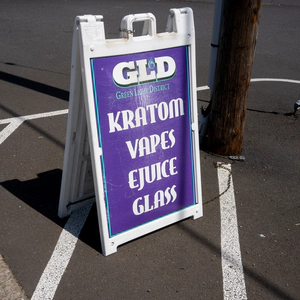Kratom Is Not a Safe Alternative to Opioids
Many experts in the alternative health sector celebrated kratom when it first rose to popularity in the U.S., as it was thought the plant-based substance would replace dangerous and addictive opioids. However, it is becoming increasingly clear that kratom is dangerous, even lethal.

People are dying from taking kratom, the plant-based substance from Southeast Asia that many initially believed would be a breakthrough alternative to opioid painkillers for people with chronic pain.
Mother of Four Died from Kratom Toxicity
The cause of death for Krystal Talavera, 39, mother of four, was the opioid-like herb known as kratom. In June 2021, Krystal collapsed and died while cooking breakfast for her family. She had been taking kratom for pain management, likely believing it was a safer alternative to opioid painkillers. “Most kratom users don’t realize how unregulated it is whenever they’re using it,” said Dr. Peter Grinspoon, commenting on the unfortunate state of affairs that has people seeking safe pain relief options but landing on kratom. “At the same time, I do think it’s really sad how desperate people are because we’re under-treating chronic pain and we’re under-treating addiction and a lot of this is just really coming out of people’s sheer desperation.”1
“Most kratom users don’t realize how unregulated it is whenever they’re using it…”
A wrongful death lawsuit against the supplement’s distributor, Grow LLC, alleged that the distributor labeled the supplement as all-natural, promoting a sense of safety around the substance. Yet Krystal died from “acute mitragynine intoxication,” according to the Palm Beach County Coroner. Mitragynine is one of two primary chemical compounds found in kratom, and it is the active ingredient in kratom, much like THC is the active ingredient in marijuana.
Though kratom was first introduced in the United States as a safe alternative to opioids, a natural pain reliever, and a way to withdraw off of opioids, recent research has revealed the substance can cause sedation, nausea, vomiting, addiction, difficulty breathing, and death.

Though kratom does not have FDA approval, the substance is also not under a federal ban, meaning people can buy kratom at convenience stores, smoke shops, gas stations, and online. Kratom is still relatively easy to obtain even in the handful of states that have banned it (Alabama, Arkansas, Indiana, Rhode Island, Vermont, and Wisconsin). A 2016 Drug Enforcement Administration (DEA) proposal attempted to ban kratom. It failed, and though the FDA has administered warnings about kratom since then, the FDA has neither begun to regulate the drug for consumption nor has it listed kratom as a controlled substance.2
Kratom Is Addictive
In addition to putting users at risk for overdose and other harmful side effects (more on those later), kratom is addictive. “There have been some case studies of people getting so addicted to kratom, they’ve actually needed suboxone to come off it, which is what we use to get people off heroin and oxycodone,” says Dr. Grinspoon, again highlighting the similarities between kratom and opioids.
Kratom Has Negative Side Effects
Because kratom is not regulated, it is impossible to know what chemicals are used to manufacture the drug. Though the substance comes from a plant, it is processed before being sold, and consumers cannot know what chemicals are used during processing. According to the National Institute on Drug Abuse (NIDA), side effects of taking kratom are almost impossible to predict, as they will depend on the amount taken, potency, product formulation, the way it is ingested, what other drugs the user may be on, and their underlying medical conditions.3

However, common side effects tend to be both opioid-like and stimulant-like in nature. People who take kratom report stimulant effects like increased energy, alertness, and rapid heart rate. But they also report sedative effects like relaxation, pain relief, and confusion.
Harmful effects are also quite common. Overdose from mitragynine toxicity (mitragynine is one of two active ingredients in kratom) is the drug’s most severe effect. Users also report mental and neurological symptoms like confusion, tremors, and seizures. They report heart and lung problems, too, like high blood pressure and slow breathing. They also report gastrointestinal problems like nausea and vomiting. Finally, people who use kratom over time risk developing severe liver complications.
For Those in Pain, They Must Find Safe Alternatives

It is understandable why people who struggle with chronic pain might seek alternatives to opioid painkillers, given that opioid pharmaceuticals are addictive and can cause harm, even when used as intended. According to NIDA’s last estimate, about 1.7 million people in the U.S. have used kratom, most of them self-medicating with the drug to cope with physical pain, anxiety, or depression.
However, kratom is not the answer people are looking for. People who struggle with chronic pain must find and utilize pain relief options that are not habit-forming, and people who struggle with anxiety and depression should not look for solutions in mind-altering substances that can be addictive.
Help for Those Addicted to Kratom
Recent NIDA reports suggest that people who use kratom frequently tend to experience withdrawal symptoms when they stop. The presence of withdrawal symptoms strongly indicates that the drug is habit-forming, though more research is needed. However, preliminary NIDA data did back up Dr. Grinspoon’s concern about kratom being addictive. According to NIDA, because kratom’s active ingredients (mitragynine and 7-hydroxymitragynine) activate the same receptors in the brain activated by opioids, it’s been hypothesized that users may develop a similar addiction to kratom as to opioids.
It’s not uncommon for a new drug to be introduced as a “miracle cure” or a way to experience relief without harmful effects. Psilocybin, ibogaine, and even LSD have often been marketed this way, especially earlier in the drugs’ histories. Just as with those drugs, enough data has now come forward to create a legitimate alarm around kratom. For those who have not yet used the drug but who are considering it, they should avoid kratom. And for those already hooked on the drug, they must get help at a qualified drug rehab center as soon as possible.
Sources Cited:
-
USNews. “$11 Million Awarded to Family of Woman Who Died After Taking Kratom.” U.S. News, 2023. usnews.com ↩︎
-
FDA. “FDA and Kratom.” Food and Drug Administration, 2023. fda.gov ↩︎
-
NIDA. “Kratom.” National Institute on Drug Abuse, 2022. nida.nih.gov ↩︎






 ®
®